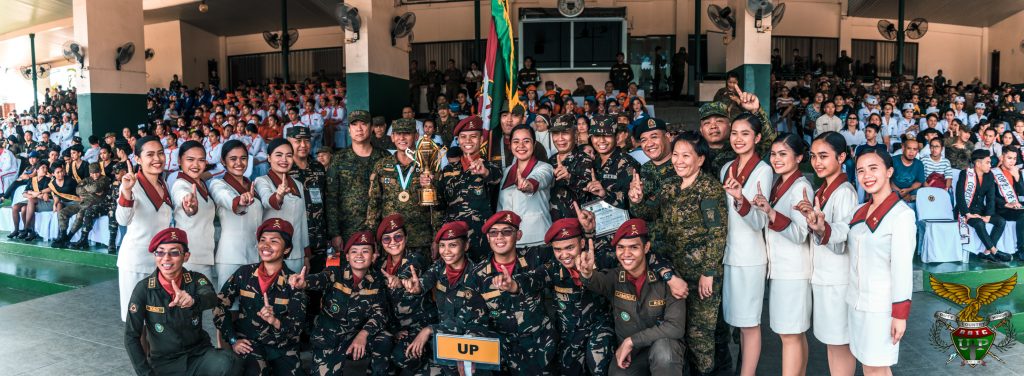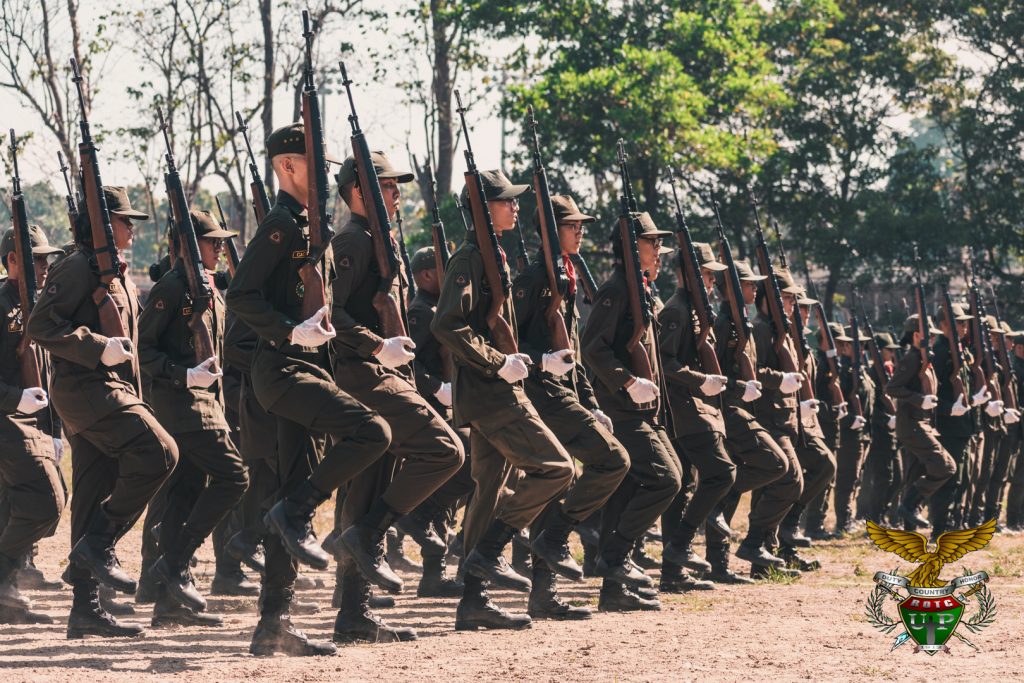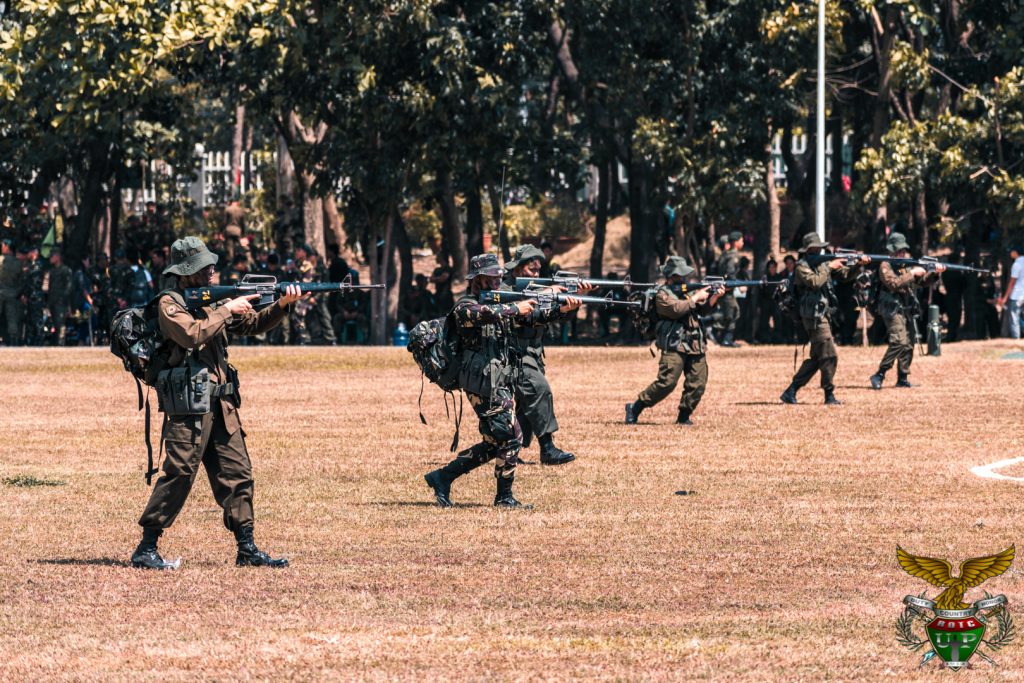The University of the Philippines Diliman (UPD) Reserve Officers Training Corps (ROTC) bested twelve other colleges and universities in Metro Manila that offer Army ROTC, in a competition held from February to March of this year and organized by the National Capital Region Regional Community Defense Group (NCRRCDG), Army Reserve Command (ARESCOM), Philippine Army.
“RAATInTo!” was the battle cry of the cadets – students enrolled in ROTC – taken from UP’s own #AtinTo and the title of the competition RAATI (Regional Annual Administrative and Tactical Inspection). For several years that the RAATI was conducted, UPD ROTC always held the top position. However, in the last four years, the championship trophy was held by other schools.

The weeks of rigorous training of the cadets with their cadet officers have assured the university its victory.
“Each and every cadet and cadet officer put their minds on what they need to perform. We are among a few schools that prepared late for this competition,” said Cadet Lieutenant Colonel Bing Bong Salinas, Corps Commander of UPD ROTC referring to the opening of classes in UP only in August, two months later than most other schools that start training in June. “Our success can also be attributed to the support of our Corps of Sponsors who cheered us on every training day, our parents who let us stay late and spend weekends training, and the university through the Department of Military Science and Tactics.”
Aside from the top spot, the UPD ROTC also received several awards. Among which are Best in OPORD Writing, Best in Methods of Instruction, Best in First Aid, and Best in IED Identification. OPORD writing is a skill taught to cadet officers to allow them to write a comprehensive yet clear and concise operation orders. Methods of instruction tests the teaching capability of cadet officers as they transfer knowledge and skills to their cadets. First aid competition tests the unit’s capability to respond to any given incident. IED or improvised explosive device identification tests the ability of cadets to show common IEDs used by terrorist and lawless groups.
“UP ROTC is all of us – cadet officers, cadets, sponsors, parents and the UP community – and this win is by all of us,” Salinas shared. “We all pitched in our time, energy and commitment. I am proud of our cadets, my fellow UP students, for their dedication and desire to win. And we did.”

RAATI helps the Philippine Army determine the state of training and readiness of ROTC units in the country. Competing schools are divided in to two categories. Category A for the 14 schools with an enrolment of 350 cadets or more and Category B for the 13 schools with an enrolment of less than 350 cadets. UPD ROTC belongs to Category B.
The inspection is divided into two phases, a decentralized phase and a centralized phase. The decentralized phase is when inspectors visit the schools. The centralized phase is when all participating schools are brought to the Hunters ROTC Parade Grounds in the Army headquarters at Fort Bonifacio.
The first phase examines how the school conducts briefing of guests and review the cadets’ performance in a parade. The inspectors also check the uniform and general knowledge of each cadet, test the drill proficiency of the company and platoon, test the teaching skills of the cadet officers (method of instruction) and see if the capability of cadet officers to prepare an operation plan and order (OPORD writing). The management of records and other related documents of the ROTC unit is also rated.
The second phase covers testing first aid skills, practical application of small unit tactics, map reading and actual land navigation, theoretical examination and timed assembly and disassembly of the M-16 rifle and .45-caliber pistol – and the identification of the individual components of each weapon.

In between the two phases, is the limited warfighting competition held on 24 February 2019 at the Army Reserve Command headquarters in Tanza Cavite. This portion tests cadets’ skills in shooting at a hostage taker, sniper firing, aiming and firing a mortar, firing under time pressure and after a 300 meter run and identifying improvised explosive devices.
Schools under Category A are Bestlink College of the Philippines, City of Malabon University, Eulogio Amang Rodriguez Institute of Science and Technology, Lyceum of Alabang, Marikina Polytechnic College, New Era University, Pamantasan ng Lungsod ng Marikina, Pamantasan ng Lungsod ng Maynila, Pamantasan ng Lungsod ng Valenzuela, Polytechnic University of the Philippines, Rizal Technological University, Technological University of the Philippines, University of Manila and the University of Santo Tomas.
On the other hand, schools under Category B are the Arellano University, Central Colleges of the Philippines, De La Salle Araneta University, Emilio Aguinaldo College, Jose Rizal University, Metro Manila College, Olivarez College, Our Lady of Lourdes Technological College, Pamantasan ng Lungsod ng Muntinlupa, Samson College of Sciences and Technology, University of Caloocan City, University of the East and the University of the Philippines.
by C2Lt Mecco Carl Niño Camense 2Cl and MSg Kenneth C Tirado (Res) PA





